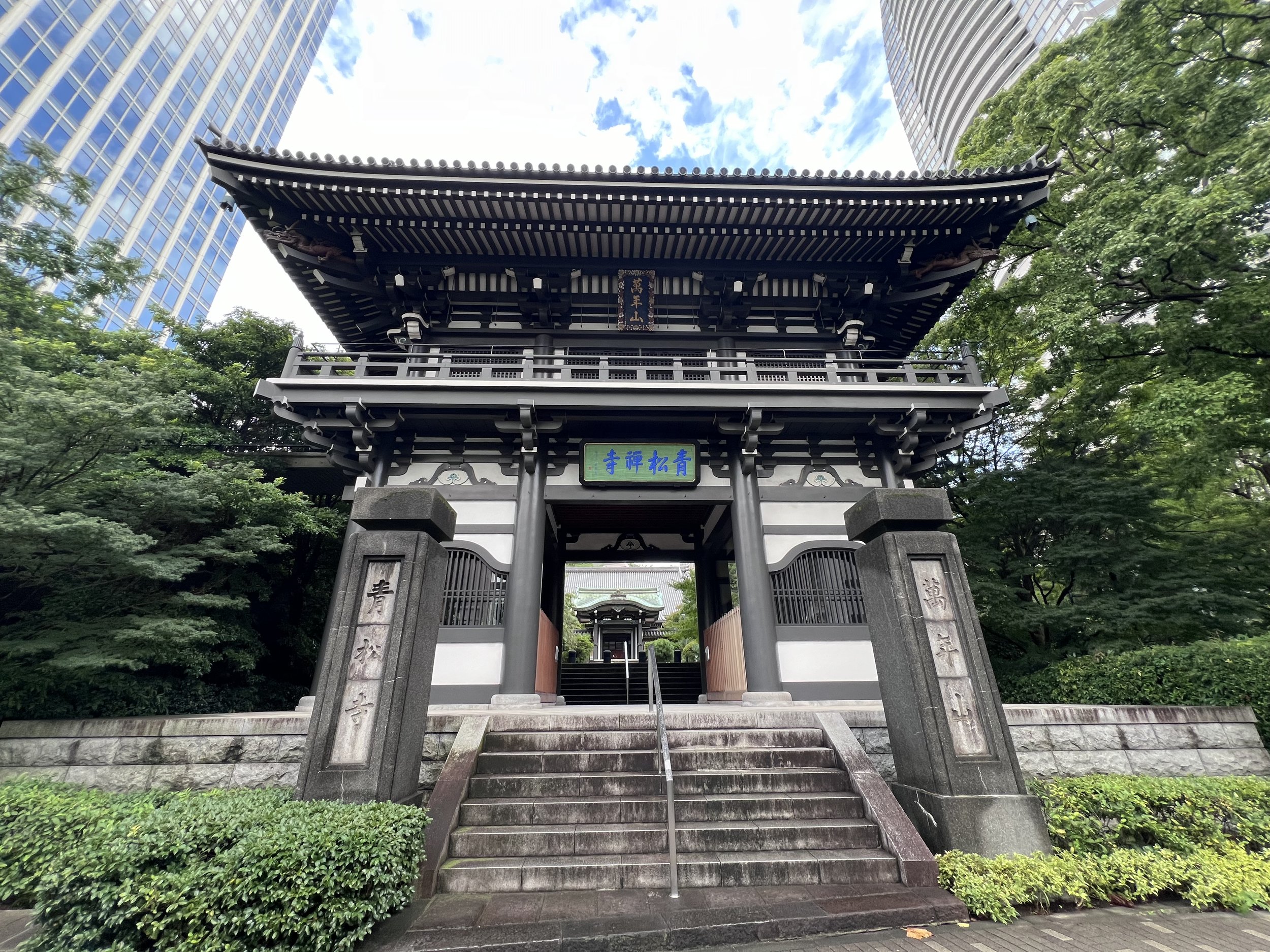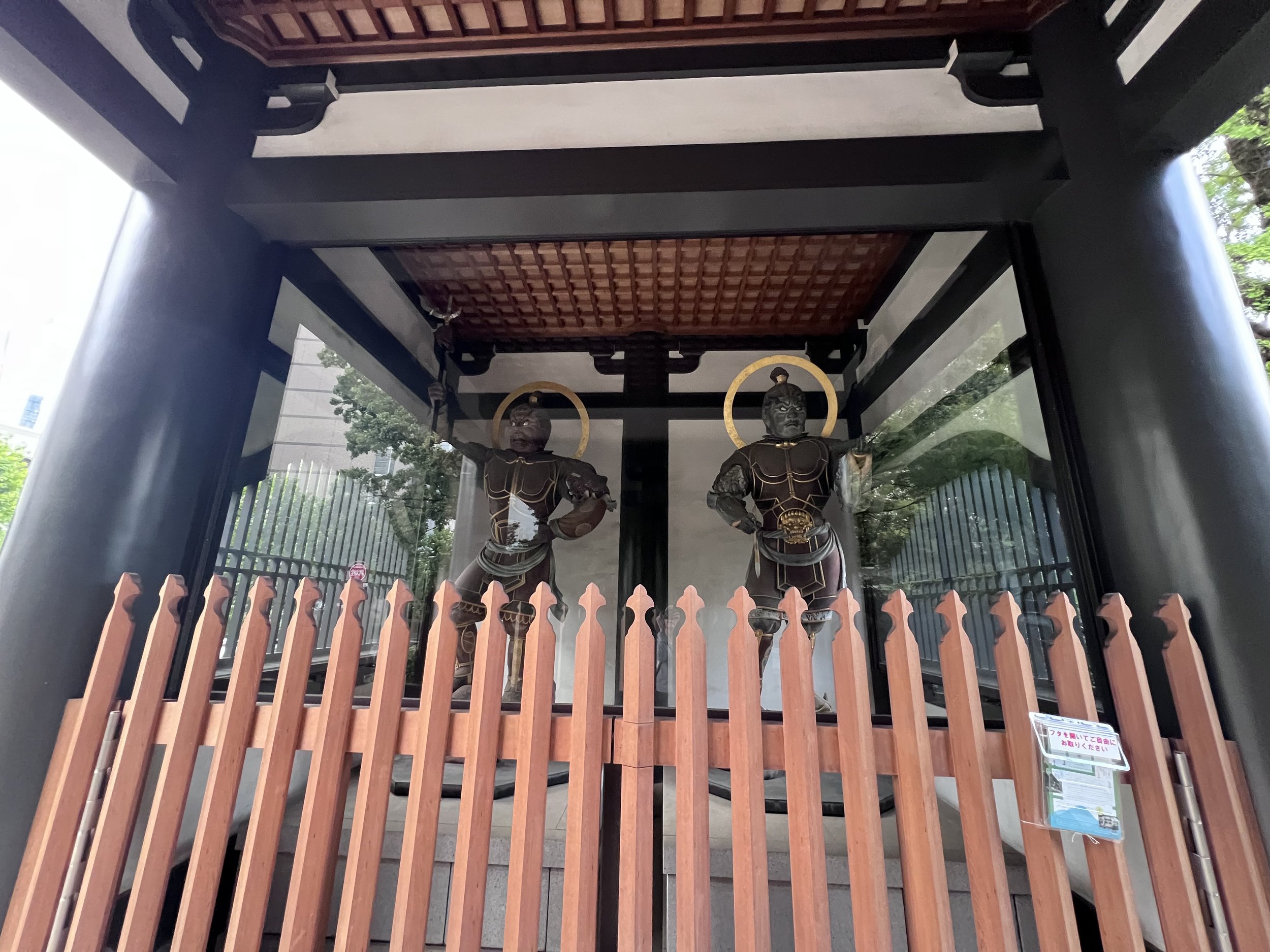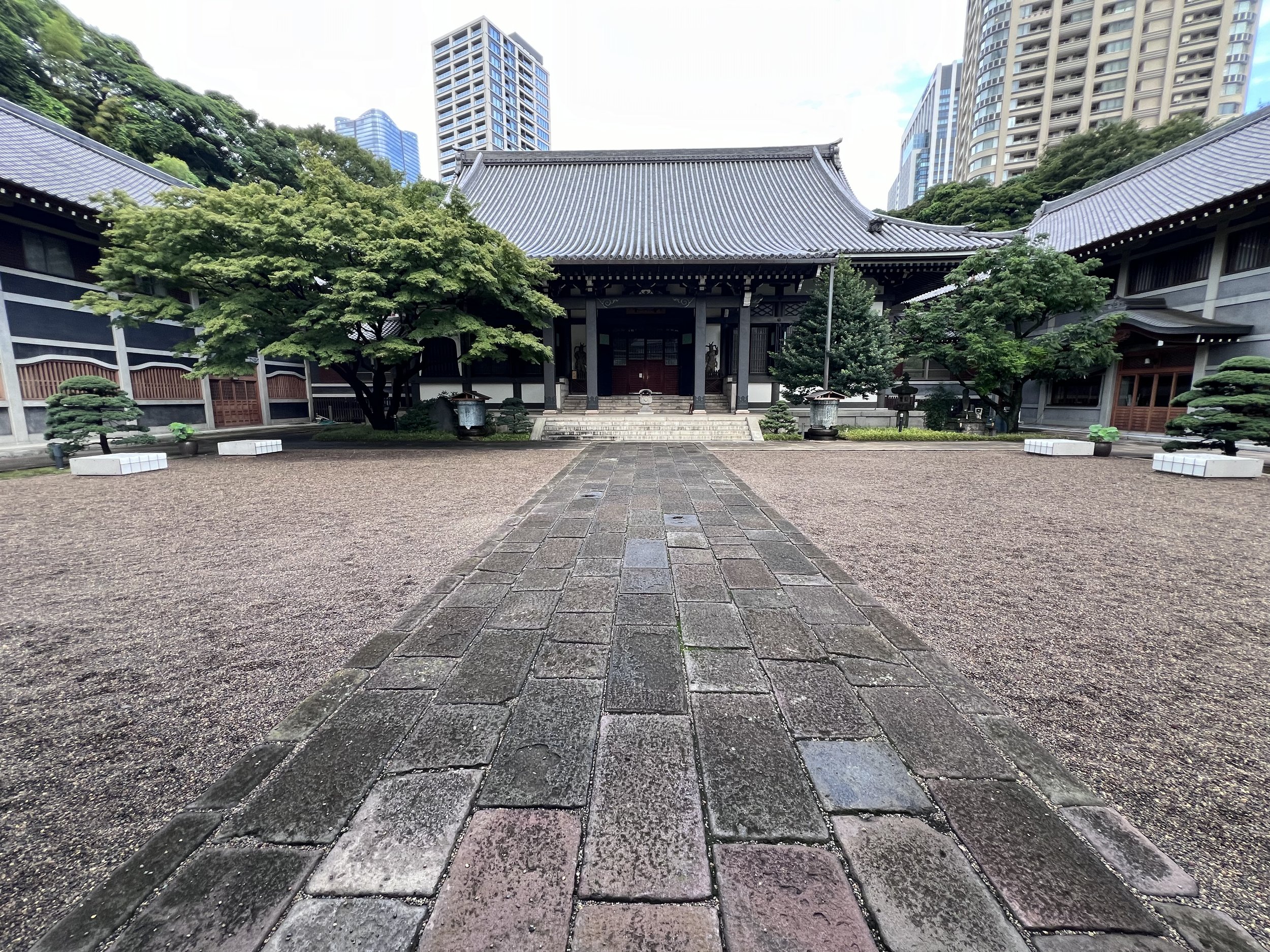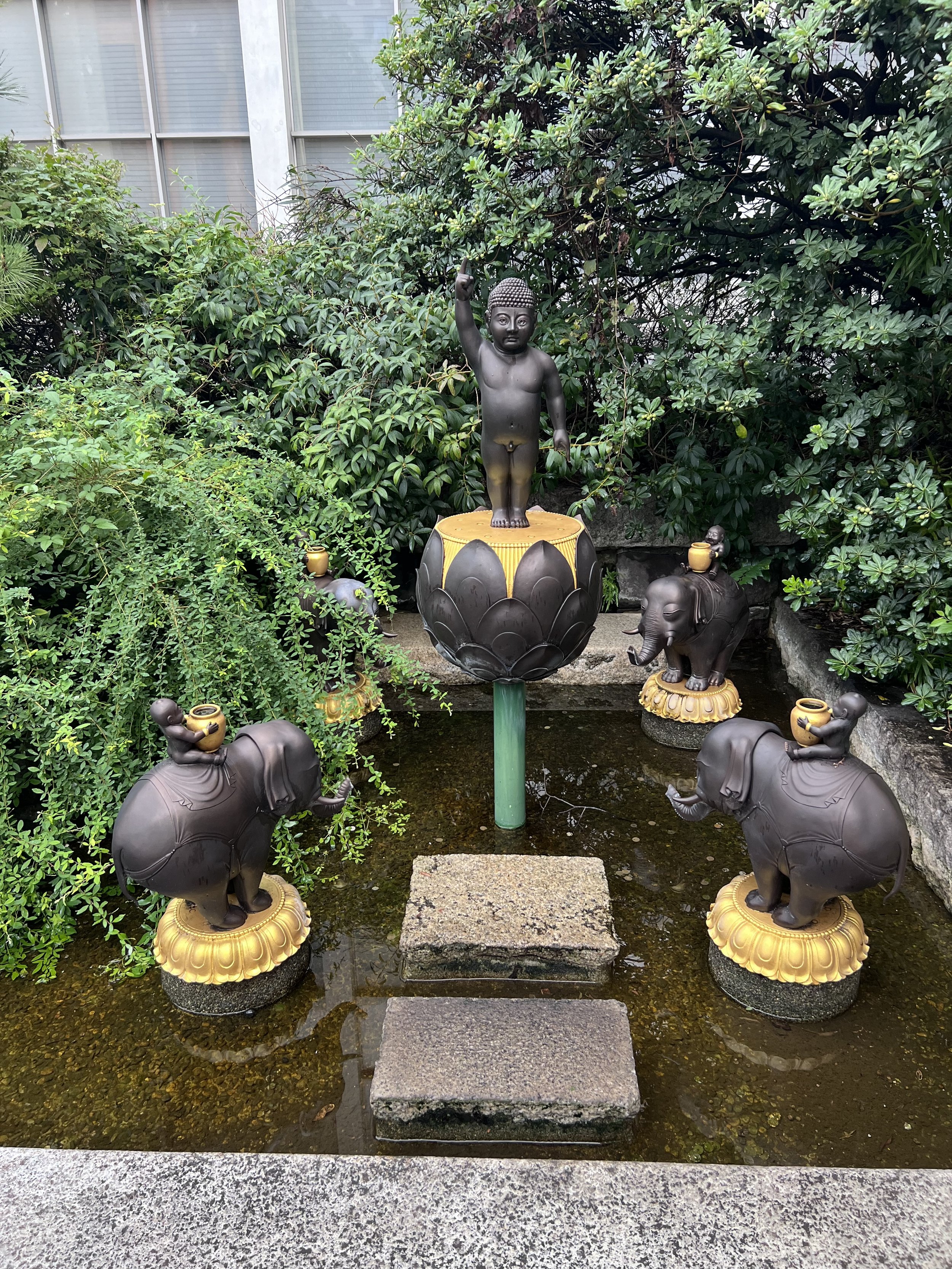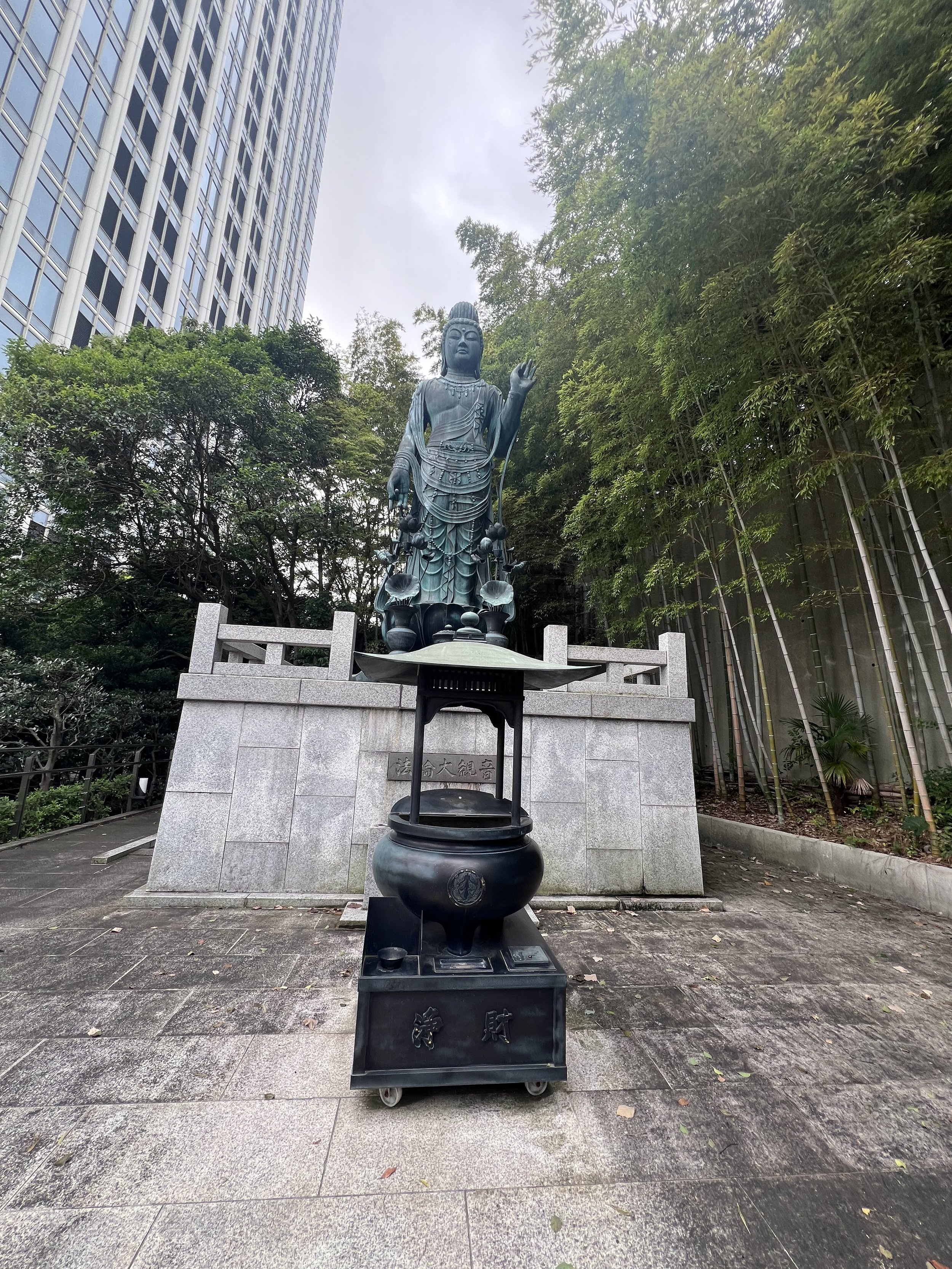Seishoji Zen Buddhist Temple
Seishoji was founded in 1476 by Ota Dokan, who developed Edo city (Tykyo).
Exploring the Temple Grounds
As you enter Seishoji, you are immediately greeted by a sense of calm that contrasts with the bustling city outside. The temple grounds are beautifully maintained, with lush greenery, ancient trees, and traditional stone lanterns that create a serene environment. The main hall, a modest yet elegant structure, serves as the heart of the temple, where monks and visitors alike come to meditate and pray.
One of the temple’s most notable features is its Zen garden, a quiet space designed for contemplation. The carefully raked gravel, arranged stones, and minimalistic plantings reflect the Zen principles of simplicity and harmony. This garden invites visitors to slow down and engage in mindful observation, offering a moment of stillness in the midst of the city.
Zen Meditation at Seishoji
Seishoji is not just a historical site; it’s an active Zen temple where the teachings of Soto Zen are practiced daily. The temple offers zazen (seated meditation) sessions, where participants can experience the core practice of Zen Buddhism. These sessions are open to both beginners and experienced practitioners, providing a unique opportunity to engage with Zen in an authentic setting. Attending a zazen session at Seishoji allows visitors to experience sitting in silent meditation, surrounded by the history and tranquility of the temple, offers a rare and profound sense of peace.
This shrine is immediately behind the large Shiva statue - it is specifically to pray to get rid of hemorrhoids.
